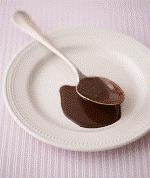 Anna King from Taste magazine has some great tips for cooking with this yummy ingredient.
Anna King from Taste magazine has some great tips for cooking with this yummy ingredient.
Chocolate is way too delicious to ever go out of fashion, so it’s very worthwhile knowing what to buy and how to cook with it.
Chocolate suitable for cooking is always dark, meaning it doesn’t contain milk solids. It’s important to buy the right kind for the recipe. Here are some to look out for:
Bittersweet chocolate:
Great for baking as it contains a high percentage of cocoa solids, from 55%-75%, which give a rich flavour, but it may not be to everyone’s taste and you may need to add more sugar to your recipes to counteract the bitterness in those types with high percentages. Valrhona, from France, is a superior brand offering a range of percentages for the home cook to try. Supermarket shelves are now well-stocked with good, inexpensive bittersweet options with around 70% cocoa solids.
Semi-sweet chocolate:
Has a higher ratio of sugar, and cocoa solids from 35%-54%, giving a milder flavour to recipes. Try Valrhona Jivara, or dark cooking chocolate from the supermarket.
Couverture:
A professional cooking chocolate which requires some expertise to use, but its high cocoa butter ratio creates a silky finish, perfect for coating truffles.
Then there are the cheaper options:
Compound chocolate: Inexpensive, as it’s made with vegetable fats or emulsifiers, rather than cocoa butter. The downside is that it lacks richness and won’t melt in the mouth the same way that superior products will.
Chocolate chips, bits and buttons:
These are convenient to use in family baking such as cookies, muffins and brownies. These are often made of compound chocolate.
The trick is to find a favourite and stick to it – cooking with chocolate is all about personal preference.
Storing chocolate:
Chocolate should be stored well-wrapped in a dark, dry place. Its gloss will dull when refrigerated and it can pick up odours so, if you do need to keep it in the fridge, do so in a sealed container. Chocolate can develop white marks, called a ‘bloom’, from improper storage – it’s unsightly but will not affect the taste.
Many of us at will have had the problem of melting chocolate which suddenly seizes and hardens. This is due to too much heat or moisture. Here are two foolproof methods for melting:
Stovetop:
Place pieces of chocolate in a heatproof bowl over a pan of simmering water, or use a double saucepan if you have one. Make sure the bottom of the bowl doesn’t touch the water and that no water or steam comes into contact with the chocolate, as this will result in a hard, grainy finish. Take off the heat while still slightly lumpy and stir to a smooth finish.
Microwave:
Place chocolate pieces in a microwave-proof bowl and heat for 40-second intervals on medium-high heat, stirring at every interval, until smoothly melted.
Check out these great chocolate recipes at www.taste.co.nz









Join the Discussion
Type out your comment here:
You must be logged in to post a comment.